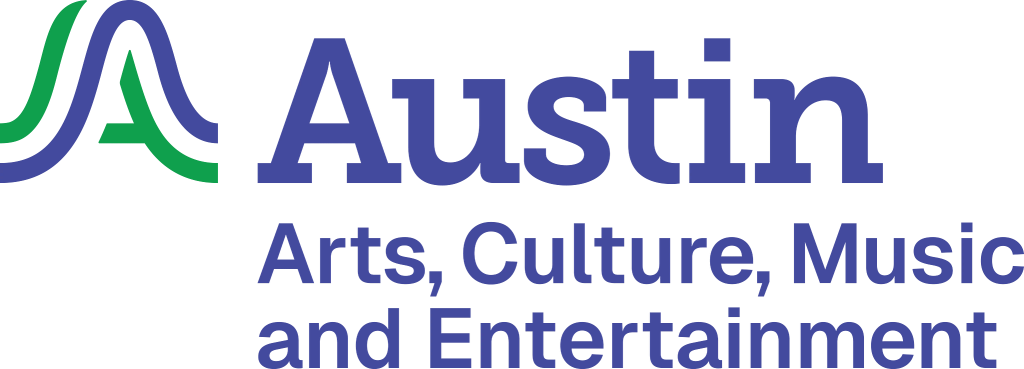The Cultural Funding Review was an important step to correct the historical and structural disparities that have led to inequitable funding awards for decades.
Cultural Funding Review
Thrive, Elevate, and Nexus cultural funding programs were developed in consultation with Austin’s creative community from 2019-2022. Funding prioritizes equity through a combination of seed funding, broad sector support, and targeted investment. Read the Cultural Funding Report (English, Spanish).
All proposed changes were made with equity in mind, helping to support those most impacted by the COVID-19 pandemic as well.
For example:
-
An organization that received $75,000 in Fiscal Year 2021 would receive $6,750 in Fiscal Year 2022. This is both an award that is not meaningful and perpetuates the systemically racist elements of the Cultural Funding system. Instead, we could fund the most economically vulnerable with an amount that would make a difference.
Based on extensive community input, staff and arts management professionals from MJR Partners identified several “big picture” concepts to inform draft programs and program guidelines: nurturing the cultural community, building institutions, and preserving cultural identity. In alignment with the City’s commitment to equity, departmental goals, and statutory requirements, programs will seek and prioritize:
- Individuals and organizations from historically underrepresented communities and histories, specifically Black/African American, Native American, Asian, Hispanic/Latino, Middle Eastern, Pacific Islander, LGBTQIA, and Disability Community members.
- Sustaining and growing Austin’s cultural infrastructure so that all may share in the economic and employment benefits of the heritage preservation and creative sectors.
- Proposals that directly enhance cultural experiences for tourists and convention delegates, including projects that highlight underrepresented histories and narratives.
- Improvements to process and administrative efficiencies to enhance the customer experience and reduce barriers to access.
- Importance of Equity
-
Racial equity is the condition when race no longer predicts a person’s quality of life outcomes in our community. The City of Austin recognizes historical and structural disparities and a need for alleviation of these wrongs by critically transforming its institutions and creating a culture of equity.
The Cultural Arts Division acknowledges that previous Cultural Funding Program guidelines contributed to inequity. Staff examined how the existing policies influenced whose voices are heard, whose culture is protected, and who is most visible. Inequitable program elements include:
- Restricting awards and funding requests based on budget size
- Requiring fiscal sponsorship of individuals and unincorporated groups
- Limiting opportunities for cultural producers of color to access programs that foster growth
- Failing to collect valuable demographic and evaluative information from applicants and contractors to gauge performance
The Cultural Funding Review Process has produced several relevant resources that reflect an evolving commitment to reshaping the ways in which the City invests in its cultural community through the Cultural Funding program:
- Final Report (PDF, 1.8MB), El camino hacia la equidad cultural (PDF, 2.2 MB)
- Interim Report (PDF, 854 KB)
- Equitable Economic Resiliency Framework (PDF, 11.9 MB)
- City Budgeting for Equity Results Scorecard
City of Austin Equity Support Resources:
- City of Austin Equity Office – Established in 2016 to focus on advancing equity in all aspects of City operations. Equity Action Team Dashboard
- Task Force on Institutional Racism and Systemic Inequities Final Report (PDF, 2.5 MB)
- Resolution No. 20150507-027 - In 2015, City Council directed the City Manager to evaluate the impact of existing city policies and practices on racial equity and develop an Equity Assessment Tool that can be used across City departments during the budget process.
- Vision and Goals for Cultural Equity
-
Four Visions for Cultural Equity
Viewing the Cultural Funding Review Process through an equity lens reveals four ways that equity can be achieved (credit and inspiration from createequity.com):- Diversity - Mainstream institutions become more diverse and reflective of their communities
- Prosperity - Large-budget organizations intentionally shift a higher level of financial benefit and compensation to more artists of color.
- Redistribution - Funders provide more resources to organizations rooted in communities of color.
- Self-Determination – People of color have ownership over shaping cultural life in their communities.
In community conversations, we heard the importance of:
- Advancing diversity, inclusion and racial equity is a priority and that freedom of cultural expression is fundamental to civic life in the City of Austin.
- Program design takes a disruptive stance toward addressing the sense of entitlement that exists among long-time contractors.
- Commitment to equitable policies and practices are embedded in program design.
- Visible connections exist between organizational and community priorities.
- Benchmarks toward advancing organizations of color toward institution status are set and measurable.
- Cultural tourism is a visible outcome of program design and delivery.
Cultural Arts will measure operational equity through representation, redistribution of cultural funding, and other ways organizations have committed to ongoing equity efforts. To address historic inequities and systemic bias, City investment in historically marginalized groups (BIPOC, LGBTQIA, and Disability community member organizations) will be a priority.
- Measure Report
-
The Cultural Funding Program includes Thrive, Elevate, Nexus, and the Austin Live Music Fund. Supported by the Hotel Occupancy Tax (HOT), the program provides arts and music activities for Austin by contracting with individuals and organizations of the creative community. Funding aims to prioritize equity through a combination of seed funding, broad sector support, and targeted investment. Read the Measure Maximizing Impact Report.

